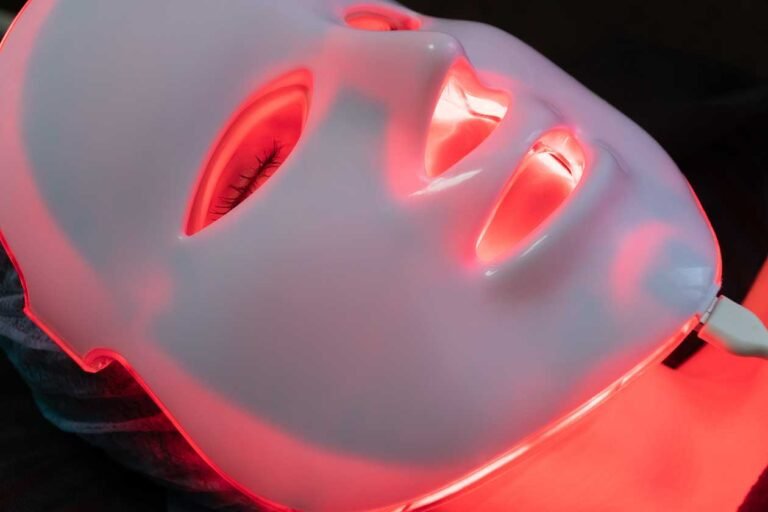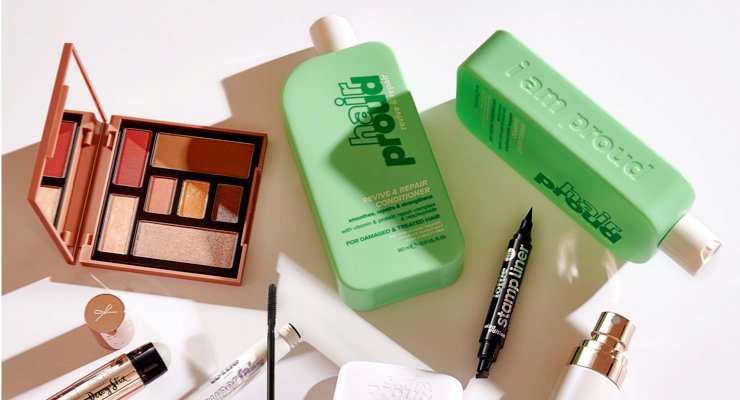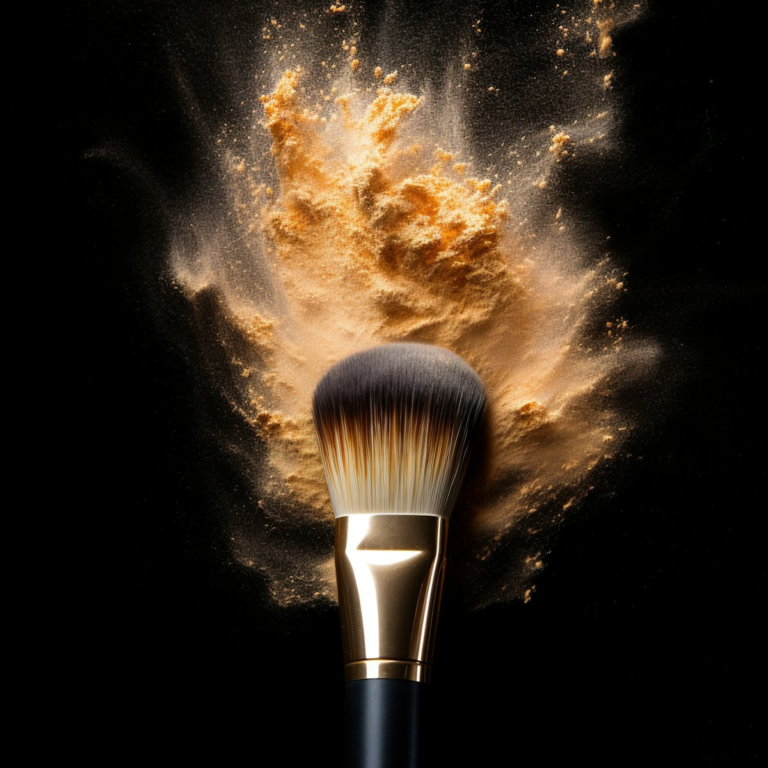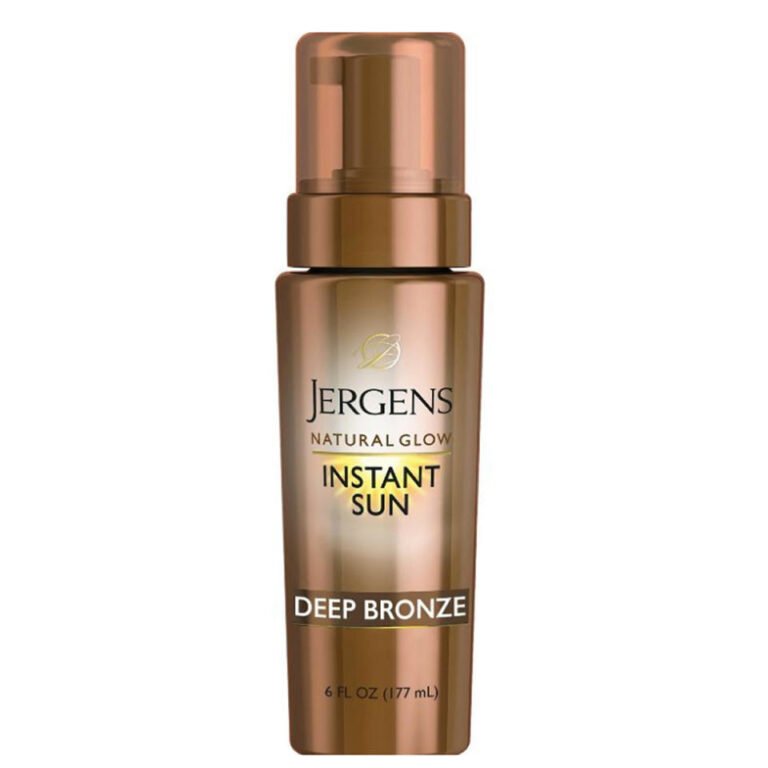How to Apply Makeup for Your Face Shape: A Guide
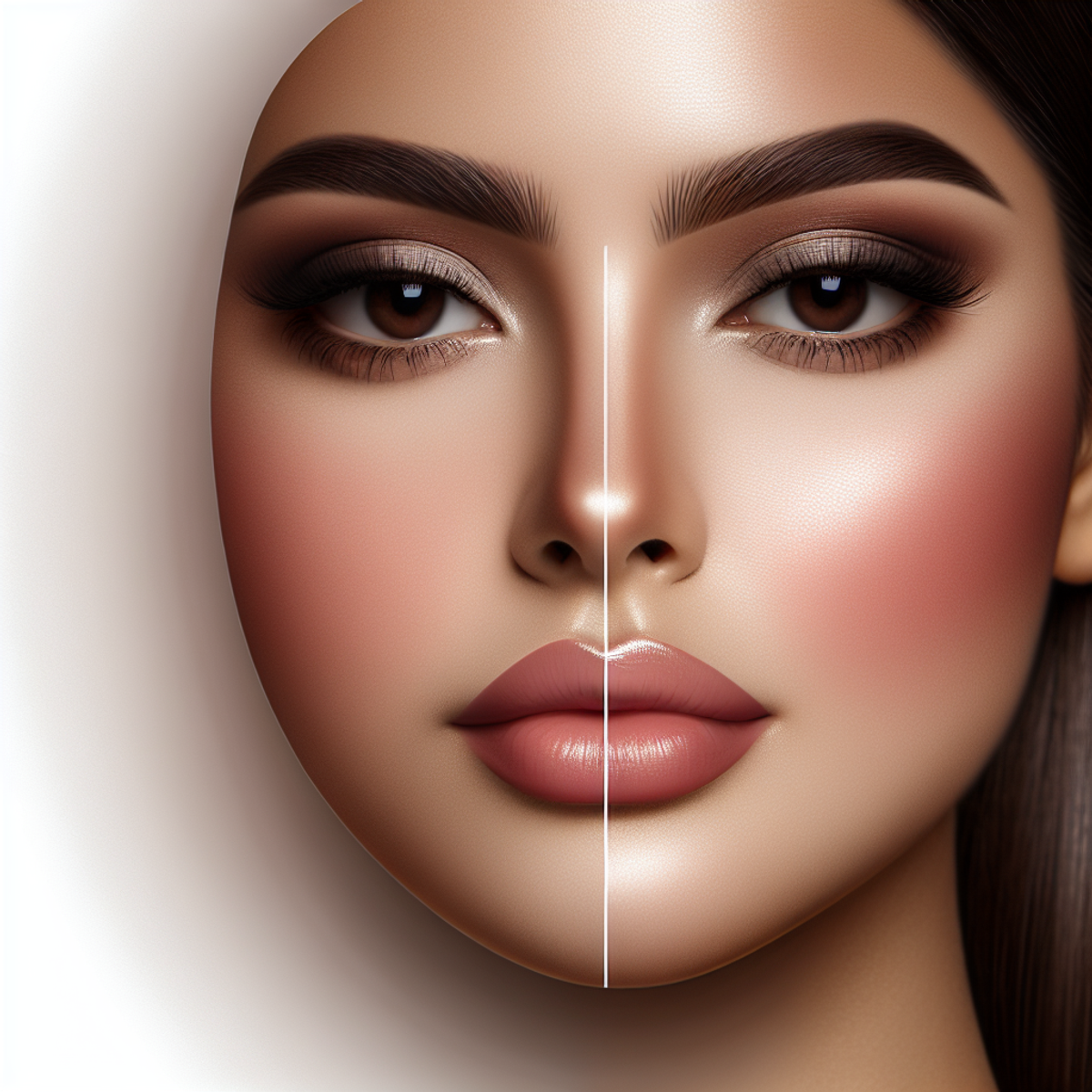
Introduction
The impact of face shape on makeup application is significant. Your face shape determines the best techniques to enhance your natural features and overall look. In this guide, we will discuss how to determine your face shape and apply makeup strategies tailored to different shapes.
Understanding your face shape is key to achieving the most flattering makeup looks. We will explore the characteristics of oval, square, oblong, round, and heart-shaped faces, and provide corresponding makeup strategies for each. Embracing your unique face shape and knowing the right makeup techniques can truly empower you to showcase your natural beauty.
The overview of different face shapes and their corresponding makeup strategies will lay the foundation for personalized and effective makeup application. By understanding the nuances of each face shape, you can strategically enhance your features and create stunning makeup looks tailored to your individual beauty.
Understanding Face Shapes
When it comes to applying makeup, understanding your face shape is key to achieving a flattering and balanced look. Each face shape has its own unique characteristics and proportions, and by strategically using makeup techniques, you can enhance your natural features and create a harmonious overall appearance.
1. Oval Faces
Oval faces are often considered the ideal face shape due to their balanced proportions. If you have an oval face shape, you can consider yourself lucky because almost any makeup look will suit you. The goal for oval faces is to maintain the natural symmetry and highlight the balanced features.
Here are some makeup techniques specifically for enhancing oval faces:
- Contouring: To add definition and dimension to the face, use a matte bronzer or contour powder to lightly shade the hollows of your cheeks, temples, and jawline. This will help accentuate your bone structure without overpowering your natural shape.
- Highlighting: Apply a shimmery highlighter on the high points of your face, such as the tops of your cheekbones, brow bone, and down the center of your nose. This will bring a subtle glow to these areas and further emphasize the symmetry of your face.
- Eye Makeup: Experiment with different eyeshadow colors and techniques to enhance your eyes. Since oval faces have well-proportioned features, you can play around with various eye looks—from smokey eyes to bold eyeliner styles—to accentuate your eyes’ natural beauty.
- Lip Colors: With an oval face shape, you have the freedom to experiment with different lip colors and finishes. From vibrant reds to soft pinks or nude shades, choose lip colors that complement your skin tone and personal style.
Remember, with an oval face shape, you have the opportunity to try out a wide range of makeup looks. Embrace your natural symmetry and experiment with different techniques to enhance your best features.
Now that we’ve covered makeup techniques for oval faces, let’s move on to the next face shape: square faces.
2. Square Faces
Understanding your face shape is crucial for effective makeup application. Each face shape has its own unique features and characteristics that can be enhanced through strategic makeup techniques. In this section, we will focus on square faces and explore how to soften angular features and create a more rounded appearance.
Description of the Square Face Shape
Square faces have distinct features that include:
- A strong, angular jawline
- A forehead that is almost as wide as the jawline
- Proportional length and width, giving a box-like appearance
Some famous examples of square-faced beauties include Angelina Jolie and Keira Knightley.
Makeup Techniques for Softening Angular Features
The goal for square faces is to soften the sharpness of the jawline and create a more rounded look overall. Here are some makeup techniques to achieve this:
- Contouring: Use a matte bronzer or contour shade to sculpt the jawline and temples. Apply the product in a sweeping motion along the hairline and under the cheekbones, blending it well for a natural finish. This will help to create the illusion of softer angles.
- Blush Placement: Apply blush on the apples of your cheeks, sweeping it upwards towards your temples. This technique adds warmth and softness to your face, giving the illusion of roundness.
- Eyeshadow: Opt for eyeshadow shades that have warm undertones, such as browns or coppers, as they can help soften the features. Apply a medium-toned shade all over the lid, focusing on blending it outwards towards the edges for a more rounded effect.
- Lip Shape: To balance out the strong jawline, choose lip colors that draw attention to your lips rather than your lower face. Experiment with shades like soft pinks or berry tones. Avoid using lip liners that emphasize sharp angles; instead, opt for a more rounded lip shape.
Remember, these techniques are meant to enhance your natural features and create balance. Embrace your square face shape and have fun experimenting with different makeup looks that suit your unique beauty!
3. Oblong Faces
To achieve a harmonious and balanced look that enhances your natural features, it’s important to understand different face shapes. In this section, we will focus on oblong faces and explore makeup techniques specifically designed for this distinct face shape.
Description of Oblong Face Shape
Oblong faces have an elongated appearance, with similar widths at the forehead, cheekbones, and jawline. The length of the face is typically longer than its width, giving it a sleek and slender structure. Common features of oblong faces include a more extended forehead and a slight narrowing at the chin.
Makeup Techniques for Oblong Faces
The main objective when applying makeup to an oblong face is to create the illusion of width and achieve a more balanced proportion. By using the right products and methods, you can enhance your facial features while maintaining a cohesive look.
- Adding Width: Apply blush or bronzer slightly lower on the cheeks, closer to the mouth. This technique visually shortens the face and adds width, resulting in a more balanced appearance.
- Creating Balance: Opt for eyeshadow styles that highlight the horizontal dimension of the eyes, such as softly blended eyeshadow in the crease area. This helps balance out the length of the face.
- Highlighting: Use highlighting products on areas like the center of the forehead and chin to bring attention to these areas and minimize the elongation effect.
By incorporating these targeted makeup techniques for oblong faces along with following a basic 4-step makeup application guide, you can enhance your natural beauty while embracing your unique facial structure. If you are unsure whether you have an oblong face or not, refer to this helpful guide on how to find your face shape.
4. Round Faces
The round face shape is characterized by soft, curved lines without prominent angles. The width and length of the face are almost equal, with fuller cheeks contributing to its circular appearance.
Makeup Techniques for Round Faces
When applying makeup to a round face, the goal is to create definition and add angles to the soft curves for a more balanced look. Here are some techniques to enhance round faces:
- Contouring: Use a matte contour powder or cream to shade the areas beneath the cheekbones, along the jawline, and the sides of the forehead. This technique helps to create the illusion of more defined cheekbones and a slimmer face shape.
- Highlighting: Apply a highlighter on the high points of the face, such as the top of the cheekbones, bridge of the nose, and the cupid’s bow. Highlighting adds dimension and draws attention to specific features, balancing out the softness of a round face.
- Blush Placement: When applying blush, focus on sweeping it diagonally along the cheekbones towards the temples to create an elongated effect. Avoid applying blush directly onto the apples of the cheeks, as this can emphasize roundness.
- Eye Makeup: For round faces, creating elongated eye looks with eyeshadow can help balance out facial proportions. Experiment with winged eyeliner and eyeshadow techniques that lift and elongate the eyes.
- Lip Contouring: Using lip liner to define and slightly overline the lips can complement a round face by adding structure and balance to the overall look.
By strategically using these makeup techniques, individuals with round faces can create dimension, angles, and balance for a more sculpted appearance. Remember that makeup is a form of artistic expression; feel free to experiment with different techniques and adapt them according to your personal style and preferences.
5. Heart-Shaped Faces
Understanding different face shapes is crucial for enhancing natural features and achieving a balanced overall look with makeup. One such face shape is the heart-shaped face, which requires specific attention to balance the wider forehead and accentuate the cheekbones while minimizing the appearance of a pointed chin.
Description of Heart-Shaped Face Characteristics
- Forehead: Heart-shaped faces typically have a broader forehead, creating a distinctive upper face area.
- Cheekbones: The cheekbones are often a prominent feature of heart-shaped faces, adding definition to the mid-face region.
- Pointed Chin: The chin area tapers to form a subtle point, distinguishing it from other face shapes.
Makeup Techniques for Heart-Shaped Faces
- Balancing the Forehead: To create balance and harmony, focus on softening the width of the forehead with makeup techniques. This can be achieved by using contouring and highlighting to visually narrow the forehead area.
- Accentuating Cheekbones: Emphasizing the cheekbones can enhance the natural structure of a heart-shaped face. By applying blush or bronzer slightly below the apples of the cheeks, you can draw attention to this area and add warmth to the complexion.
- Minimizing Pointed Chin: Softening the pointed chin can be achieved through contouring and highlighting techniques. By using lighter shades on the chin and subtly blending them towards the jawline, you can create the illusion of a more rounded chin shape.
By strategically applying makeup to address these specific areas of a heart-shaped face, you can enhance its natural beauty and achieve a more balanced overall appearance. Understanding how to work with your unique features allows for personalized makeup application that complements your individual face shape.
Remember that while these techniques are tailored to heart-shaped faces, makeup is ultimately an art form that allows for creativity and personal expression. Experimenting with different approaches can lead to discovering new ways to highlight your best features and embrace your individuality through makeup.
Applying Makeup Based on Face Shape
When it comes to applying makeup, understanding your face shape can make a significant difference in achieving the most flattering and balanced look. By strategically emphasizing certain features and minimizing others, you can enhance your natural beauty and create a harmonious overall appearance. In this section, we will discuss the importance of preparing the face before makeup application and provide specific tips for each face shape.
1. Preparing the Face
Before diving into the world of makeup application, it is crucial to prepare your face properly. This step sets the foundation for a flawless finish and ensures that your makeup lasts throughout the day. Here are some essential steps to follow:
- Cleansing: Start by cleansing your face with a gentle cleanser to remove any dirt, oil, or impurities. This step helps create a clean canvas for makeup application and prevents clogged pores.
- Moisturizing: Next, hydrate your skin with a suitable moisturizer that suits your skin type. Moisturizing not only nourishes the skin but also helps create a smooth surface for makeup application.
- Priming: Applying a primer is an optional but highly beneficial step in creating a long-lasting makeup look. Primers help fill in fine lines, minimize the appearance of pores, and provide a smooth base for foundation.
By following these preparatory steps, you set yourself up for success in achieving a flawless and long-lasting makeup look.
Now that you have prepared your face, let’s move on to specific tips for each face shape:
Oval Faces
Emphasize the natural symmetry and balanced proportions of your oval face shape by focusing on enhancing your best features:
- Use highlighting techniques on the high points of your face, such as the cheekbones, brow bone, and down the center of the nose.
- Opt for neutral or soft shades on the eyes to maintain the overall balance of your face shape.
Square Faces
Soften the angular features of your square face shape by creating a more rounded appearance:
- Use contouring techniques to add dimension and create softer edges on the jawline and forehead.
- Choose blush shades in soft pinks or peaches to bring warmth to the cheeks and soften the angles of the face.
Oblong Faces
Add width to your oblong face shape to achieve a more balanced look:
- Apply blush on the apples of your cheeks to create the illusion of roundness.
- Focus on the eyes by using eyeshadow techniques that make them appear wider and more defined.
Round Faces
Create definition and add angles to the soft curves of your round face shape:
- Contour the hollows of your cheeks, temples, and jawline to create a more sculpted look.
- Use eyeshadow techniques that elongate the eyes, such as applying darker shades on the outer corners.
Remember, these makeup tips are not meant to restrict you but rather serve as guidelines for enhancing your natural features. Feel free to experiment with different looks and adapt them to your personal style. Ultimately,
2. Foundation and Concealer
When it comes to applying makeup based on your face shape, foundation and concealer play a crucial role in achieving a flawless complexion. Choosing the right foundation shade and formula for your skin type is essential, as well as knowing how to seamlessly blend it for a natural-looking finish. Additionally, using concealer strategically can perfect the complexion while still maintaining the natural contours of your face.
Choosing the Right Foundation Shade and Formula
One of the first steps in applying makeup is selecting a foundation that matches your skin tone. For each face shape, consider the following tips:
- Oval Faces: You have the luxury of experimenting with different foundation shades since oval faces are considered versatile and balanced. Choose a shade that matches your skin tone and opt for a formula that suits your skin type (e.g., matte for oily skin or dewy for dry skin).
- Square Faces: To soften angular features, choose a foundation shade that is slightly warmer than your natural skin tone. This can help create a more rounded appearance.
- Oblong Faces: If you have an oblong face shape, opt for a foundation shade that matches your skin tone. However, focus on formulas with a luminous or dewy finish to add a youthful glow.
- Round Faces: To create definition and angles, choose a foundation shade that matches your skin tone. Consider using contouring techniques (which we’ll discuss later) to add dimension to your facial structure.
- Heart-Shaped Faces: For heart-shaped faces, select a foundation shade matching your skin tone and choose formulas with a radiant finish. This can help balance out the wider forehead and accentuate the cheekbones.
Techniques for Seamless Blending
Once you have chosen the right foundation shade, it’s important to know how to apply it properly for a seamless finish:
- Start by preparing your face as mentioned earlier – cleanse, moisturize, and prime – to create a smooth canvas for makeup application.
- Use a foundation brush, sponge, or your fingertips to apply small dots of foundation on the center of your face (forehead, nose, cheeks, and chin).
- Gently blend the foundation outwards towards your hairline and jawline using circular motions or downward strokes.
- Pay special attention to blending the foundation along the edges of your face to avoid any visible lines.
- If needed, build up coverage in areas that require extra attention but remember to blend it seamlessly into the surrounding skin.
Using Concealer to Perfect the Complexion
Concealer is a powerful tool for camouflaging imperfections and highlighting specific areas of your face. Here’s how to use concealer effectively:
- After applying foundation, assess your complexion for any blemishes, dark circles, or redness that need extra coverage.
- Choose a concealer shade that matches your skin tone or is one shade lighter for brightening effect.
- Apply small dots or thin lines of concealer directly onto the areas you want to cover or highlight.
- Gently blend the concealer by tapping it with your fingertips or using a small brush or beauty sponge. Make sure to blend it seamlessly into the surrounding foundation for a natural look.
- If you’re using concealer to highlight specific areas, such as under the eyes or along the bridge of the nose, apply it in a triangular shape and blend well.
Remember that both foundation and concealer should enhance your natural features rather than mask them completely. By choosing the right shades and blending techniques, you can achieve a flawless complexion that complements your unique face shape.
3. Contouring and Highlighting
When it comes to applying makeup based on your face shape, mastering the art of contouring and highlighting can make a significant difference. These techniques allow you to sculpt the face shape and accentuate your best features. Here’s an in-depth look at how contour and highlight can enhance your natural beauty, tailored to your specific face shape:
Contouring:
- Oval Faces: Focus on defining the cheekbones and jawline for added dimension and structure.
- Square Faces: Soften the angles by blending contour along the outer edges of the face, especially the temples and jawline.
- Oblong Faces: Create the illusion of width by applying contour along the hairline and below the cheekbones.
- Round Faces: Use contour to add definition along the sides of the forehead and below the cheekbones for a more chiseled look.
- Heart-Shaped Faces: Balance the wider forehead by shading the temples and define the jawline.
Highlighting:
- Oval Faces: Emphasize the high points of the face, such as the cheekbones, bridge of the nose, and cupid’s bow.
- Square Faces: Apply highlighter to soften angular features by focusing on the center of the forehead, bridge of the nose, and chin.
- Oblong Faces: Add luminosity to the high points of your face to create a balanced effect.
- Round Faces: Highlight areas like the center of the forehead, bridge of the nose, and chin to create dimension and draw attention away from the width of the face.
- Heart-Shaped Faces: Accentuate your cheekbones and brow bone while keeping the focus away from the forehead.
Expert Tip: When choosing products for contouring and highlighting, opt for matte contours to create shadows and shimmer-free highlighters for a natural glow.
By customizing your contouring and highlighting techniques according to your face shape, you can achieve a harmonious balance that enhances your unique features. Remember that practice makes perfect, so don’t hesitate to experiment with different placements until you find what works best for you.
4. Blush and Bronzer
Blush and bronzer are essential tools in your makeup kit to add color, dimension, and warmth to your face. When you apply them correctly according to your face shape, they can enhance your natural beauty and bring out your best features. Here’s a guide on how to apply blush and bronzer based on your face shape:
The Role of Blush
Blush is used to add a natural flush of color to the cheeks, giving you a healthy and vibrant appearance. It also helps to define the cheekbones and bring out the contours of your face. Here are some tips for applying blush:
- Oval Faces: Apply blush on the apples of your cheeks and blend upward towards the temples. This will help to accentuate the natural symmetry of your face.
- Square Faces: To soften the angular features of a square face, apply blush in a circular motion on the apples of your cheeks and blend it towards the hairline.
- Oblong Faces: Add width to an oblong face by applying blush horizontally across the apples of your cheeks. This will create a more balanced look.
- Round Faces: Contouring with blush can help create definition on round faces. Apply blush slightly below the cheekbones and blend it upwards towards the temples.
- Heart-Shaped Faces: Balance a heart-shaped face by applying blush below the apples of your cheeks towards the jawline. This will help minimize the appearance of a pointed chin.
Enhancing with Bronzer
Bronzer is used to add warmth and a sun-kissed glow to your complexion, while also helping to contour certain areas of your face. Consider these tips when applying bronzer:
- Choosing the Right Shade: Select a bronzer that is one or two shades darker than your natural skin tone for a subtle effect. For fair skin, opt for a cool-toned bronzer, while warm-toned bronzers work well on medium to deep skin tones.
- Face Shape Placement: Apply bronzer along the hollows of your cheeks to create the illusion of more defined cheekbones. For square and round faces, apply bronzer to the temples and jawline to soften the angles. Oblong faces can benefit from applying bronzer on the sides of the forehead to minimize length.
Remember, blending is key when applying blush and bronzer. Use a fluffy brush to ensure a seamless and natural-looking finish. Additionally, be mindful of the intensity of the products you use and build up the color gradually for a more subtle effect.
Experiment with different shades and techniques to find what works best for you. Makeup is an art, and it’s all about enhancing your unique features and expressing your personal style. So have fun with it!
Note: The placement tips provided here are general guidelines. Feel free to adapt them according to your preferences and individual face shape.
5. Eye and Brow Makeup
When it comes to makeup application, the eyes and eyebrows play a crucial role in framing the face and enhancing its natural features. Different face shapes call for specific eye makeup techniques and brow shaping to create a harmonious look.
Enhancing the Eyes
Eyeshadow Application Techniques
Understanding your eye shape is essential for applying eyeshadow effectively. For example, individuals with hooded eyes may opt for techniques that create the illusion of depth and dimension, while those with prominent eyelids can play with light and dark shades to balance their features.
Eyeliner Styles
The choice of eyeliner style can also vary based on different eye shapes. For instance, almond-shaped eyes can carry various eyeliner looks, including winged or cat-eye styles, to accentuate their natural shape. On the other hand, round eyes can benefit from techniques that elongate and lift the eyes.
Brow Shaping
Framing the Face
Eyebrows act as a frame for the face, and grooming them according to your face shape can significantly impact your overall look. The shape of your eyebrows should be customized to enhance your unique features. For example, individuals with round faces may opt for high-arched brows to add vertical dimension, while those with heart-shaped faces can soften their features with gently arched brows.
Harmonious Filling
Filling in the eyebrows harmoniously is also crucial for creating a balanced appearance. Techniques such as using feather-like strokes or opting for eyebrow gels can help achieve a polished yet natural look.
Expert tips from professional makeup artists are invaluable when customizing looks for different face shapes. They can provide personalized recommendations on eyeshadow shades, blending techniques, and eyebrow products to best complement your unique features.
By understanding how to enhance your eyes through tailored eyeshadow application and eyeliner styles, as well as mastering the art of grooming and filling in your eyebrows harmoniously, you can elevate your makeup game while embracing the distinct beauty of your face shape.
6. Lipstick and Lip Gloss
When it comes to applying makeup based on your face shape, choosing the right lip color can make a significant difference in enhancing your natural features. Here are some key points to consider when selecting lipstick and lip gloss based on your face shape:
Choosing Flattering Lip Colors
- For Oval Faces: Experiment with a variety of shades, from bold reds to soft pinks, as oval faces have balanced proportions that can carry different colors well.
- For Square Faces: Opt for softer, more rounded shades to complement the angular features and create a more harmonious look.
- For Oblong Faces: Choose vibrant or deep hues to add fullness to the lips and balance the elongated shape of the face.
- For Round Faces: Consider using lip colors with more depth and definition to contrast the softness of the facial contours.
- For Heart-Shaped Faces: Emphasize the lips with bright and attention-grabbing shades while avoiding overly dark or heavy colors that may overwhelm the overall appearance.
Experimenting with Finishes
- Matte finishes can add definition to the lips, making them suitable for round faces that benefit from added angles.
- Glossy or shimmering finishes can create the illusion of fullness, which is ideal for oblong or heart-shaped faces seeking a plumper lip appearance.
Remember, these guidelines are not strict rules but rather starting points for you to explore. Personal style and preference play a significant role in choosing lip colors and finishes that make you feel confident and beautiful.
Expert Tip: Professional makeup artists often recommend using a lip liner that matches your natural lip tone to define and shape the lips according to your face shape. Additionally, blending different lip colors can create custom shades that beautifully complement your unique features.
By understanding how to select and apply lipstick and lip gloss based on your face shape, you can further enhance your makeup looks in a way that highlights your individual beauty.
Experimenting and Embracing Individuality
When it comes to makeup application, understanding your face shape can be a valuable tool in enhancing your natural features. However, it’s important to remember that these guidelines are just that – guidelines. They are meant to serve as a starting point for you to experiment and develop your own personal makeup style. Embracing your individuality is key, regardless of face shape constraints.
Here are some tips for experimenting and embracing your uniqueness:
- Play with colors: While certain colors may be recommended for your face shape, don’t be afraid to step outside the box and try different shades that you’re drawn to. Exploring untouched colors in your makeup palettes can be a great way to express yourself and find new favorites.
- Try different techniques: While the guide provides specific techniques for each face shape, feel free to mix and match. For example, if you have a round face but love the look of contouring, go ahead and give it a try. You may discover a technique that works uniquely for you. This beginner’s guide can help you get started.
- Personalize your routine: Use the guide as a foundation, but adapt it to suit your preferences and lifestyle. If you prefer a more natural look, opt for lighter application or skip certain steps altogether. Women in their 30s often have valuable insights on adapting makeup routines to fit their needs.
- Seek inspiration: Look to beauty influencers or celebrities with similar face shapes for inspiration. Instagram accounts like @sandragoelz can provide you with a wealth of makeup looks and techniques to explore. Take note of their makeup looks and techniques, but don’t be afraid to put your own spin on them.
- Practice makes perfect: Don’t be discouraged if your first attempts don’t turn out exactly how you envisioned. Makeup is an art form that requires practice and patience. Keep experimenting, refining your skills, and soon you’ll find what works best for you.
Remember, the ultimate goal of makeup application is to enhance your natural beauty and boost your confidence. So have fun, be creative, and embrace your individuality as you explore the world of makeup.
Conclusion
Understanding your face shape is the key to unlocking your natural beauty potential and creating makeup looks that truly enhance your features.
Embrace the opportunity to try out the recommended techniques for each face shape and share your experiences with us. Your feedback and personal insights can inspire others to discover their unique makeup styles.



